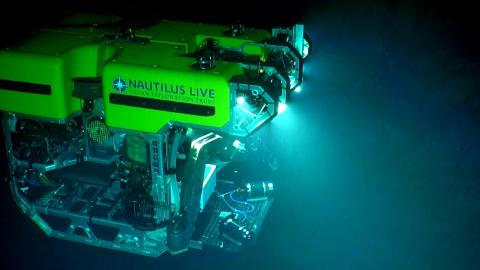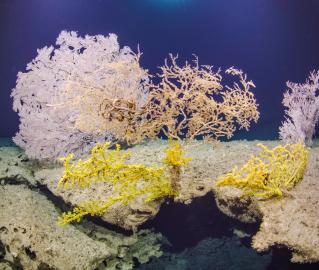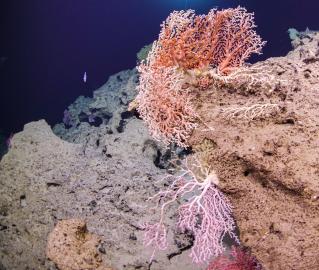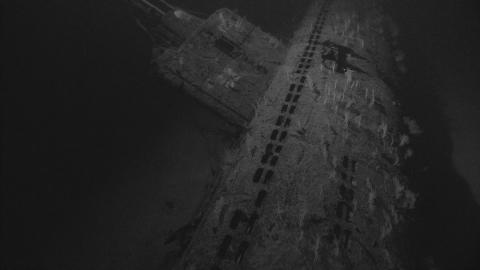Widefield Camera Array: New Technology for Immersive Imaging and Visualization
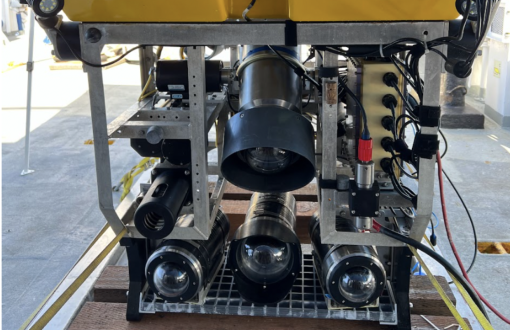
In 2023, we tested a new piece of technology: the Widefield Camera Array. Also known as Tri-clops, this system was co-developed by the Ocean Exploration Trust and Sexton Corporation to expand how we gather data from the deep ocean. Supported by the Office of Naval Research, Ocean Exploration Trust developed and tested an advanced imaging system for ROV Hercules, named the Widefield Camera Array. Purpose-built to capture immersive, high-resolution cinematic footage of deep ocean discoveries, this system also creates high-fidelity reference imagery suitable for advanced three-dimensional modeling and simulation.
Last Fall, our Corps of Exploration brought this technology onboard the Exploration Through Advanced Imaging expedition (NA156) expedition to the waters of the Hawaiian Islands. Across two weeks, they explored a variety of complex underwater terrains throughout the Hawaiian Archipelago, including cliffs, pinnacles, coral gardens, and the active submarine volcano Kamaʻehuakanaloa Seamount to develop models based on new data.
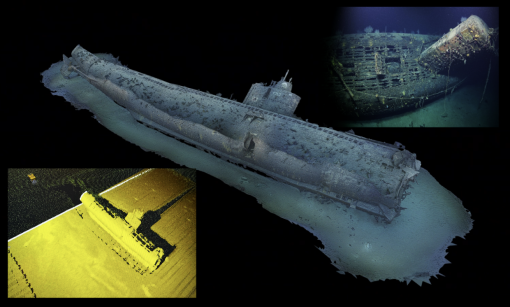
The Widefield Camera Array was used during the rapid immersive survey of the wreck of the Japanese submarine I-201. Three-dimensional scans of the submarine were generated in near real-time during the ROV survey. Ultra-high resolution multibeam data collected by the Norbit wideband multibeam sonar mounted on the ROV was used for model validation and further situational awareness.
Throughout the expedition, the camera collected over 8.5 terabytes of high-resolution video and photo. These files were transferred in near-real time during dives for edge-based processing on the ship prior to being sent ashore. To check out the 3D models generated on this cruise visit our page on Sketchfab.
Rated to a depth of 6000 meters, the system comprises three genlocked E2-F6 cinema cameras. Each camera features a 24-megapixel full-frame sensor capable of capturing images at 60 frames per second with a resolution of 6064×2560 pixels. Two cameras are configured to record stereoscopic images, providing a 180-degree field of view, while the third camera extends coverage by an additional 60-107 degrees. This setup enables the generation of 220-degree content ready for virtual reality, offering an unprecedented panoramic view of the underwater world.
The technical innovation of the camera array lies in its ability to utilize the entire forward light pool generated by ROVs Atalanta and Hercules. Achieved by synchronizing the three cameras to function cohesively with the ROV's other sensors, the two stereoscopic cameras enhance depth perception in surveyed areas. The third camera collects high-fidelity still images, calibrated alongside data from the ROV’s NORBIT multibeam. These images are essential for creating accurate, georeferenced, and ultimately explorable three-dimensional models of the seafloor.
The Widefield Camera Array marks a significant advancement in imaging technology, providing a promising new capability for future ocean explorations. Data collected with the system prepared OET and our partners with the tools necessary to create photorealistic virtualized deep-sea environments, which allow the exploration of data and the deep sea in a realistic manner even after the ROVs have left the seafloor. With the increasing adoption of immersive experiences in science and education, this tool's potential to transform our exploration and understanding of the oceans is immense.
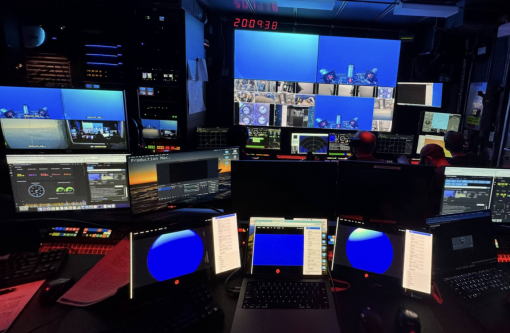
The Widefield Camera Array operated in the control room of E/V Nautilus. Stereo cameras and the high-resolution camera operate in sync to acquire immersive imaging.
OET and our partners are proud to have developed a camera capable of recording discoveries with the highest production quality available for deep ocean exploration, and we can't wait to continue sharing its evolution with the world.

Ocean Exploration through Advanced Imaging
In October, we return to ROV dives continuing our work to advance technology use in the deep sea. Experimenting with deploying a new camera technology, we will explore using a new wide-field camera array on ROV Hercules to capture three-dimensional stereoscopic imagery from the seabed.
